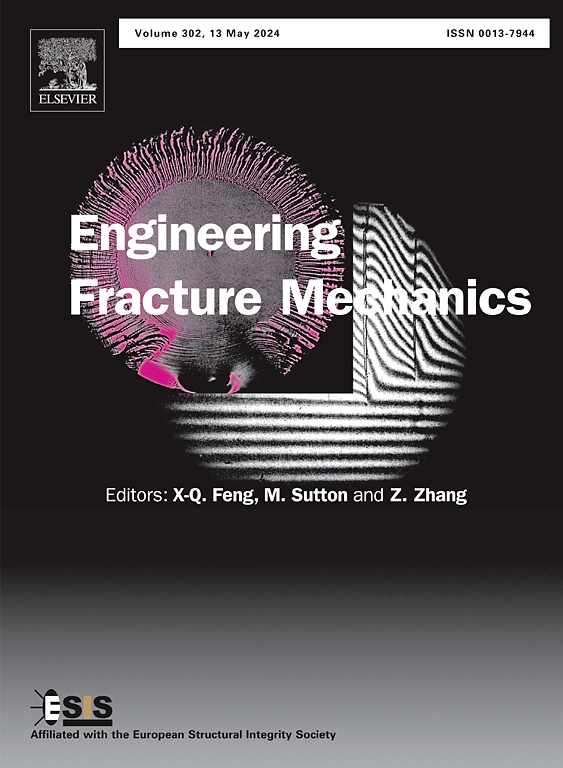Genetic algorithm-enhanced hybrid physics-informed neural networks for very high cycle fatigue life prediction
IF 4.7
2区 工程技术
Q1 MECHANICS
引用次数: 0
Abstract
This study proposes a genetic algorithm-enhanced hybrid physics-informed neural network (GA-HPINN) model for very high fatigue life (VHCF) prediction. First, the collected 37 experimental data points were expanded to 100 data points through data augmentation technique,and the augmented dataset was used as the training set. Subsequently, the HPINN model was constructed by incorporating the S-N curve physical model, the Mayer model, and the Z-parameter model as soft constraints into the loss function. Furthermore, the GA-HPINN model was developed by employing a genetic algorithm to optimize the weights assigned to the incorporated physical models. The prediction results demonstrate that the GA-HPINN model achieves an RMSE of 0.2553, exhibiting improved physical consistency and prediction accuracy in fatigue life estimation. It outperforms traditional machine learning methods (Random Forest and XGBoost), PINN models incorporating a single physical constraint, and the HPINN model without weight optimization. The proposed GA-HPINN model addresses the shortcomings of existing dependency methods and provides a more stable and effective solution for VHCF life prediction.
基于遗传算法的混合物理信息神经网络的高周疲劳寿命预测
本研究提出了一种遗传算法增强的混合物理信息神经网络(GA-HPINN)模型,用于预测甚高疲劳寿命(VHCF)。首先,通过数据增广技术将采集到的37个实验数据点扩展到100个数据点,并将增广后的数据集作为训练集;随后,将S-N曲线物理模型、Mayer模型和z参数模型作为软约束纳入损失函数,构建HPINN模型。在此基础上,采用遗传算法对纳入物理模型的权重进行优化,建立了GA-HPINN模型。预测结果表明,GA-HPINN模型的RMSE为0.2553,在疲劳寿命估计中具有较高的物理一致性和预测精度。它优于传统的机器学习方法(Random Forest和XGBoost)、包含单个物理约束的PINN模型和没有权重优化的HPINN模型。本文提出的GA-HPINN模型解决了现有依赖方法的不足,为VHCF寿命预测提供了更加稳定有效的解决方案。
本文章由计算机程序翻译,如有差异,请以英文原文为准。
求助全文
约1分钟内获得全文
求助全文
来源期刊
CiteScore
8.70
自引率
13.00%
发文量
606
审稿时长
74 days
期刊介绍:
EFM covers a broad range of topics in fracture mechanics to be of interest and use to both researchers and practitioners. Contributions are welcome which address the fracture behavior of conventional engineering material systems as well as newly emerging material systems. Contributions on developments in the areas of mechanics and materials science strongly related to fracture mechanics are also welcome. Papers on fatigue are welcome if they treat the fatigue process using the methods of fracture mechanics.

 求助内容:
求助内容: 应助结果提醒方式:
应助结果提醒方式:


